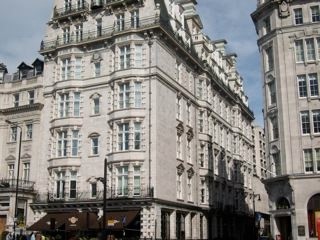
office +44(0) 20 8994 8860
fax +44(0) 20 8747 8469
Works we undertake
Cleaning
All dirt, grease and other surface contaminants should be removed,
including any moss, lichens or algae etc. This is best achieved by
pressure water jetting, streamcleaning or wax free detergent and
clean water scrubbing.
Any existing, deteriorated or inadequate surface coatings should be
removed along with cement laitence or other containants. Any surface
defects such as cracks, honeycombing, blowholes etc should be fully
exposed. This is undoudtedly best achieved by abrasive
blastcleaning, however, if environmental constraints prevent this,
then alternative mechanical means such as power tools may be
employed.

Repair
i) Mechanically break out all visibly damaged concrete, together
with other areas identified by engineer, back to a sound, alkaline
base.
All cracks in the surface should be identified and cut out (chased)
to ensure that reinforcement is not corroding. Moving cracks should
be stabilised or the degree of movement ascertained by the engineer
before proceeding.
N.B. Feather edging should be avoided and any loose aggregates
should also be removed.
Any steel reinforcement uncovered should be fully exposed along its
corroding length. it is not necessary to cut behind non-corroding
bars bedded in sound, alkaline concrete, but if in doubt it is
preferable to do so.
N.B. The removal of concrete from behind reinforcement bars should
only be carried out with the approval of the engineer.
The exposed steel reinforcement should be thoroughly cleaned;
abrasive blastcleaning is the best and most efficent way of
achieving this, but if environment constraints prevent this,
alternative mechanical means such as power tools may be employed
ii)
Immediately after cleaning (within 24 hours) the reinforcing bars to
be given two coats of STEEL REINFORCEMENT PRIMER, the second coat to
be thoroughly blinded with QUARTZ SAND to ensure a physical key for
the subsequent repair. Where part of the reinforcing bar remains
embedded in sound, alkaline concrete the primer should be overlapped
onto concrete by approximately 10 mm.
STEEL REINFORCEMENT PRIMER is a two componet , high build,
thixotropic, solvent free epoxy resin and finely ground cement
clinker (sulphate free) combination. It has a density of 1.8
kgs/litre and should be applied at approxiamtely 0.7 kgs per square
metre per coat (normal 350 microns per coat). QUARTZ SAND to kiln
dried, washed quartz river sand with rounded profiles and of
granulation 0.7-1.2mm
This is to provide a dense, impervious, highly alkaline, protective
coating around the reinforcement.
